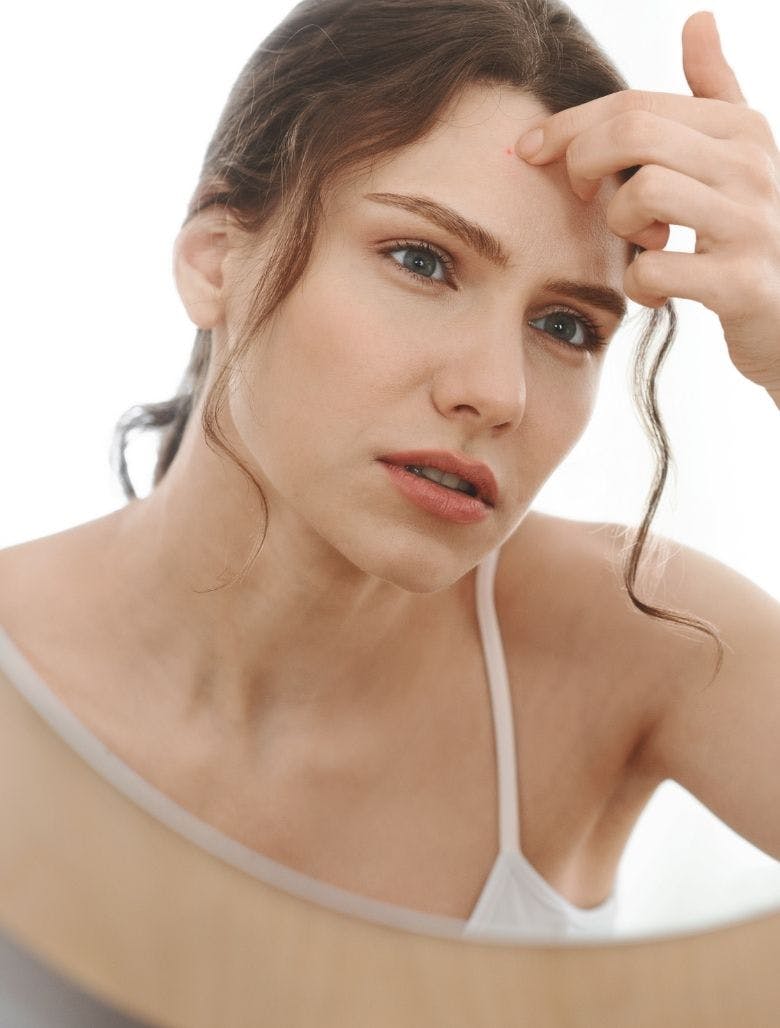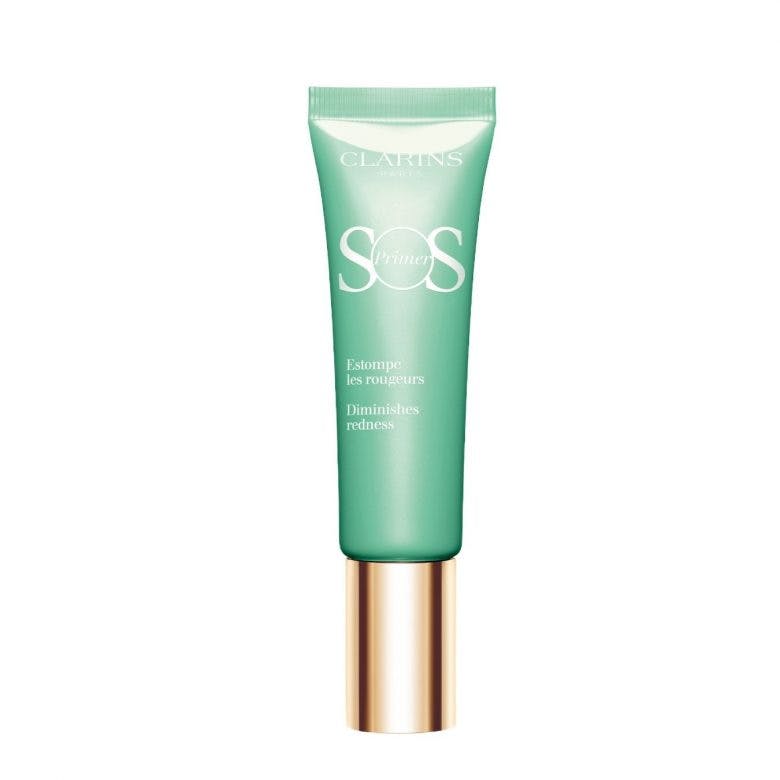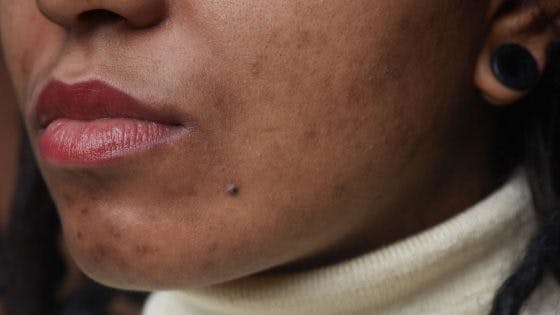Base 101: How to Make Foundation Look Natural on Acne
4 minutes read
Not all acne is equal. Some people have acne because their skin produces excess oil, while others have breakouts for hormonal reasons. Each is unique and requires different treatments and care – but whatever the type – sometimes there are occasions when you don’t want to see it.
So we ask the experts how to hide acne with foundation, concealer and their pro tips and tricks – so it looks natural and, most importantly, doesn’t lead to further breakouts. But what you should remember is acne is normal and it doesn’t have to be covered at all, it’s your skin, your choice.

The best make-up to cover acne
If you choose to wear foundation over acne, you have to ensure it’s non-comedogenic. These are specially formulated so that they won’t block your pores and cause further breakouts. Plus, a decent foundation will also offer other skincare benefits. They can soothe the skin and include hydrating, natural ingredients such as quinoa and leaf of life.
Charlotte McHale, Clarins Training Manager, doesn’t believe one should use foundation to conceal acne: “Foundation’s role is to give your face an overall even skin tone.”
She says, adding: “I think the mistake a lot of people make is to conceal their acne with make-up because they’re self-conscious. They look in the mirror and see the acne; they don’t see all of the skin in between, which is beautiful. They use a high coverage foundation all over the face when they probably only need high coverage in particular areas.” Her advice? “Use something appropriate for the majority of your skin, and then, if you want to cover spots, use something with higher coverage, such as our Everlasting Concealer, to cover blemishes.”
“Heavy coverage foundation is unflattering for most people. Instead, choose something that flatters your skin and then use a good concealer to give imperfections a little extra coverage,” McHale says.
How makeup affects acne
The good news? According to the American Academy of Dermatology, “Choose your products wisely to avoid a type of acne called acne cosmetica. This shows up as tiny bumps on your face – usually on your cheeks, chin or forehead. The biggest culprits for this type of acne are foundation and concealer.” So again, choose a non-comedogenic formulation.
There are also other interventions you should be aware of:
Are you using a make-up sponge? Brushes? When did you last clean them? They are a breeding ground for bacteria, so it’s advised to wash them every 7-10 days in shampoo. For a deep clean? Choose a dishwasher soap to cut through any residual product, grease and bacteria.
How to cover acne with make-up
Expert application tips:
- Never pop a pimple and then apply make-up over it.
- Always wash your face before applying make-up – you need a clean canvas.
- Choose a light Hydrating moisturiser that ensure make-up doesn’t slide off and that supports acne prone skin.
- When choosing a foundation, decide whether you want a matte or dewy effect. Whichever one you choose, make sure it helps to camouflage your blemishes without suffocating your skin.
Try: The matte, long-wearing Everlasting Foundation that conceals blemishes, doesn’t look cakey, and offers 24-hour durability – so it won’t melt off by lunch hour.
How to make make-up look natural on acne
Step 1: Apply day cream to clean skin. A light gel offers optimal moisture while controlling sebum production.
Step 2: Apply The SOS Primer in Green for a flawless complexion. This green primer’s weightless texture lets the skin breathe while protecting, correcting and reviving the skin. “Using a green colour correction may mean you don’t have to use as much concealer because it eliminates redness,” McHale explains.

Step 3: Depending on your preference, apply foundation to your skin with a sponge or a foundation brush. Use very light pressure, particularly around the thin, fragile skin on the eye area. Place a few drops of foundation on the back of your hand and dab with a brush or sponge. Sweep gently onto your face, using small circular movements.
Step 4: Take a concealer brush and paint the individual blemish, dab with a finger to blend into the skin and then pat into the skin a powder to set it. Take a step back and check to see if you are happy with the coverage. If not, repeat.
Step 5: Prone to shiny skin? Dust a fine powder over the face with a soft powder brush to set your foundation.
Why it’s essential to treat your acne
Covering up your acne won’t make it disappear. If you are worried, you should consult a skincare specialist or dermatologist to treat this condition.
Sign up for our newsletter
We will keep you in the loop for special offers, exclusive gifts and product news.

